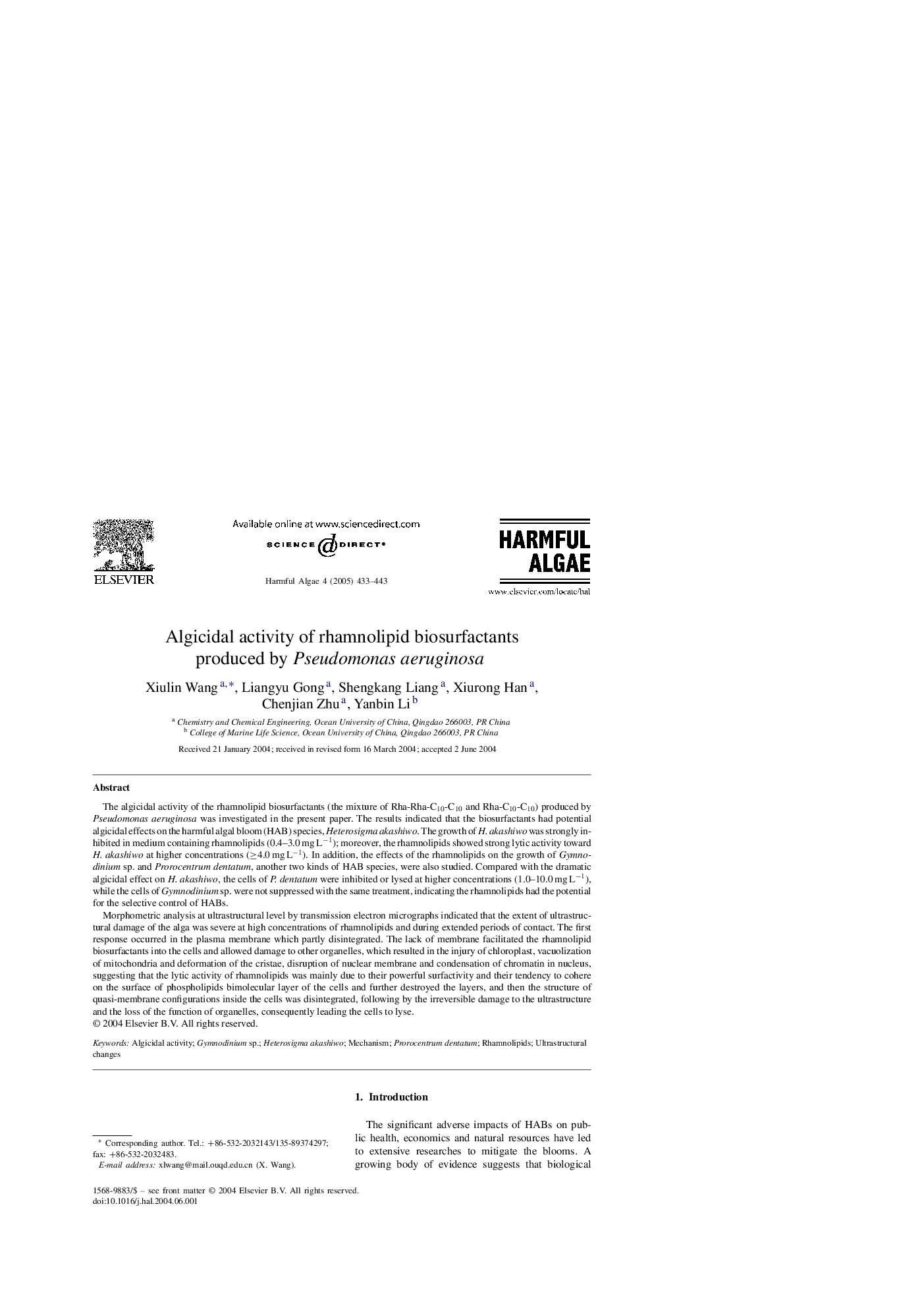| Article ID | Journal | Published Year | Pages | File Type |
|---|---|---|---|---|
| 9482720 | Harmful Algae | 2005 | 11 Pages |
Abstract
Morphometric analysis at ultrastructural level by transmission electron micrographs indicated that the extent of ultrastructural damage of the alga was severe at high concentrations of rhamnolipids and during extended periods of contact. The first response occurred in the plasma membrane which partly disintegrated. The lack of membrane facilitated the rhamnolipid biosurfactants into the cells and allowed damage to other organelles, which resulted in the injury of chloroplast, vacuolization of mitochondria and deformation of the cristae, disruption of nuclear membrane and condensation of chromatin in nucleus, suggesting that the lytic activity of rhamnolipids was mainly due to their powerful surfactivity and their tendency to cohere on the surface of phospholipids bimolecular layer of the cells and further destroyed the layers, and then the structure of quasi-membrane configurations inside the cells was disintegrated, following by the irreversible damage to the ultrastructure and the loss of the function of organelles, consequently leading the cells to lyse.
Related Topics
Life Sciences
Agricultural and Biological Sciences
Aquatic Science
Authors
Xiulin Wang, Liangyu Gong, Shengkang Liang, Xiurong Han, Chenjian Zhu, Yanbin Li,
